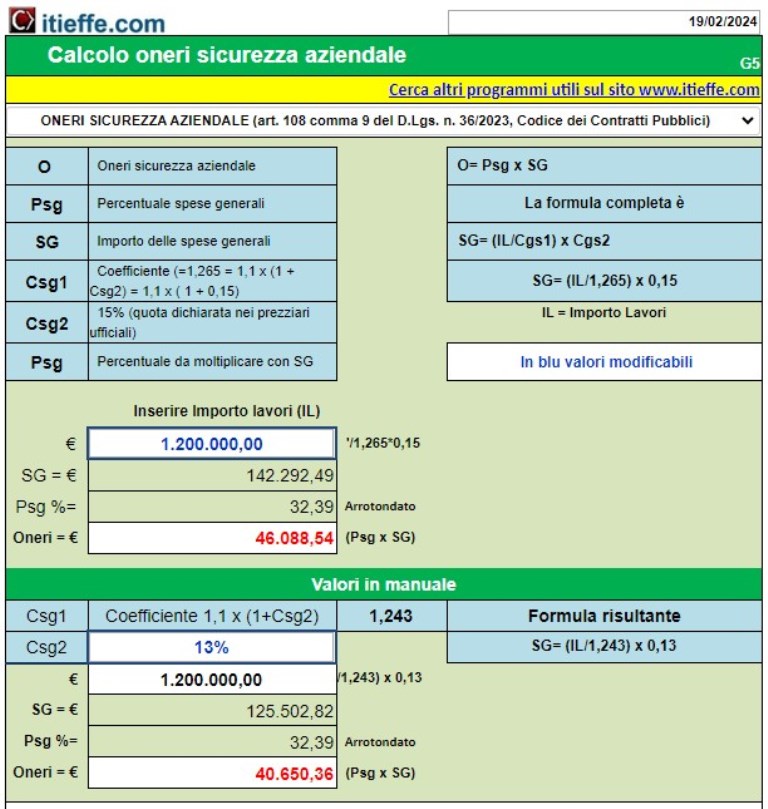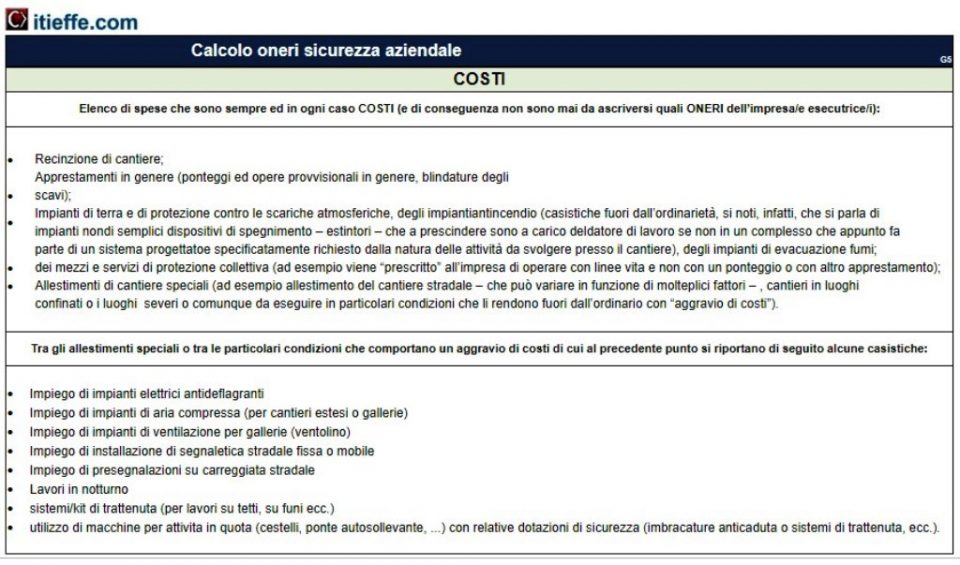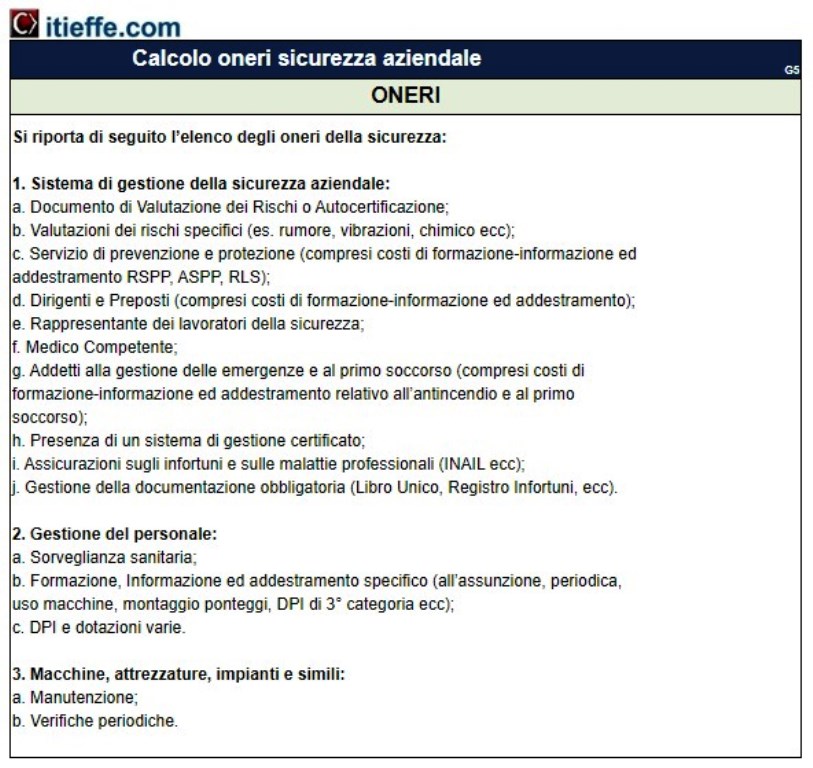Corporate security burden calculation


Corporate security is a fundamental aspect for any organization, regardless of its size or sector of activity. Ensuring a safe working environment not only protects your employees and company assets, but can also help improve productivity and reduce costs resulting from workplace accidents and injuries.
The “Company Safety Cost Calculation” program was conceived and designed by Itieffe to assist companies in calculating and managing the costs associated with safety in the workplace.
Using this program, companies can accurately and detailedly evaluate the costs necessary to ensure a safe working environment that complies with current regulations. This allows them to effectively plan their safety budget, identify potential areas of savings and take the necessary steps to continuously improve their workplace safety practices.
In summary, this program represents a valuable tool for companies wishing to invest in the safety of their employees and the integrity of their business.
Program for quickly calculating company security costs. Added section for manual calculations with different percentages of coefficients for general expenses.
Corporate security burden calculation
Program for quickly calculating company security costs. Added section for manual calculations with different percentages of coefficients for general expenses.
CHARGES AND COSTS
Safety burden refers to the entire part of the general expense that the employer in the specific construction site must bear in order to protect the safety, hygiene and health of workers.
The Contracting Authority, making use of the Safety Coordinator during the Design phase or, if not appointed, making use of the Designer, must be able to indicate the amount of the security charges (company), not to be submitted to auction reduction.
In the transmission of data to the Supervisory Authority on public contracts, the safety costs will be indicated under the heading "Total amount for the implementation of the safety", while the sum of the safety charges and the labor cost will be indicated under the heading "Any further sums not subject to the auction reduction ". The remaining amount will be the one to be subjected to a reduction and therefore to be indicated under the item "Amount of works".
It is considered necessary to clarify the difference between the two terms used, namely:
"Safety costs" e
"Safety charges".
The distinction between safety costs and safety charges arises from the different literal "sayings" found in Italian legislation, in particular at point 1.1.1 letter m), of Annex XV of Legislative Decree April 9, 2008, n.81 reads the all-inclusive definition of safety costs:
"Safety costs: the costs indicated in article 100, as well as the charges indicated in article 131 of Legislative Decree n.163 / 2006 and subsequent modifications ".
This definition shows a division between:
COSTS to be foreseen in light of what is reported in the Safety and Coordination Plan (PSC) of the individual construction site (art. 100 of Legislative Decree no. 81/2008 and subsequent amendments and following) that:
- refer to the "SAFETY PROJECT";
- they are linked to the discretion of the technical choices made by the Client of the work, by his Designer, made applicable by the Safety Coordinator during the design phase and computed within the PSC;
- they are sums consequent to activities that the contractor must carry out "ex contractu";

the COSTS relating to the Operational Plans (POS) or Replacement Plans (PSS - art. 131 of Legislative Decree no. 163/2006) which:
- they relate to specific "regulatory obligations" applicable to the individual construction site and will be made clear through the Operational Plan and / or the Substitute Safety Plan;
- they are sums consequent to activities that the contractor must put in place "ex lege".

Other free programs of the same kind offered by itieffe ▼
- Construction site safety
- Read workplace safety rules
- Safety time schedule
- Simplified plan indications
The program below is free to use.
To access the reserved version (see below), full page and without advertising, you must be registered.
You can register now by clicking HERE
